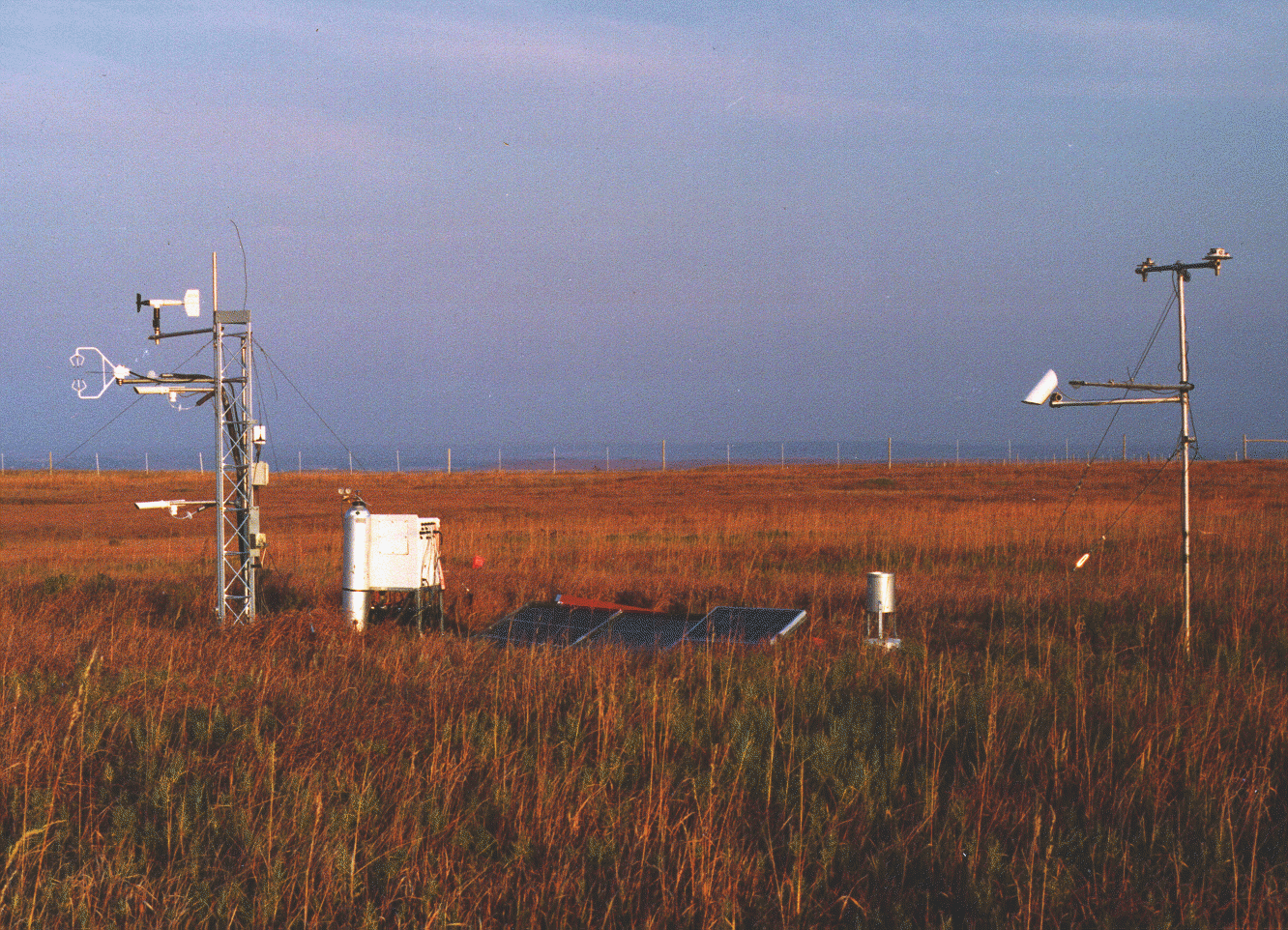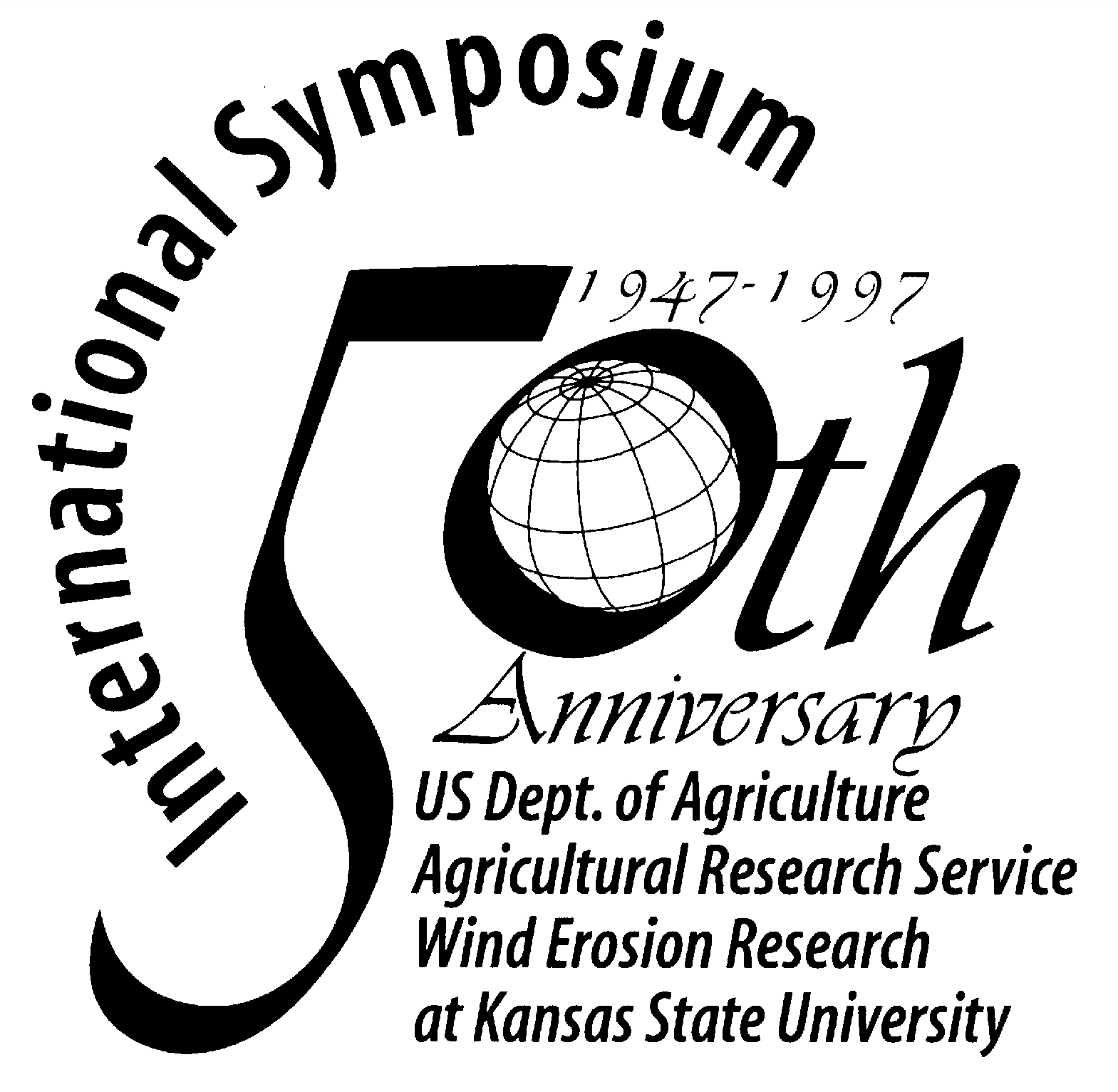
Carbon, Water, and Energy Flux Monitoring Towers on Konza Prairie Research Natural Area:
The Effect of Land Management and Environmental Factors on Surface-Atmosphere Exchange
Jay M. Ham and Dale J. Bremer*
Kansas State University
http://anasazi.agron.ksu.edu/envphys/research/fluxes.html
The flux of carbon between terrestrial ecosystems and the atmosphere is an important
process in the global carbon cycle. Understanding the biological and geochemical factors
that govern the mass flux of CO2 and other greenhouse gases are crucial if we
are to predict the complex interactions among climate change, ecosystem responses to
climate and greenhouse gases, and changes in land management. Unfortunately, we do not
know which terrestrial surfaces are sources or sinks of atmospheric carbon, and we know
even less about how climatic variation and land management will affect the C budget. Given
that almost all grasslands on the Great Plains are under extensive management for
agricultural production (grazing), it is critical to determine how human decisions such as
burning frequency and livestock stocking rates may affect biophysical processes and net
surface-atmosphere C exchange. Long-term, continuous measurements of CO2 flux
such as those provided by flux monitoring towers on Konza Prairie Research Natural Area
and adjacent rangelands will help to answer these questions.
The main objective of this research is to study the dynamics of net carbon exchange
between the surface and the atmosphere in a tallgrass ecosystem. Boundary-layer fluxes of
CO2 are being continuously monitored using conditional sampling (relaxed
eddy-accumulation). Carbon fluxes are monitored on land under three different burning and
grazing regimes. Questions to be answered include: (1) Is the tallgrass prairie a source
or sink for atmospheric CO2, and how do seasonal and interannual variations in
climate (e.g., drought) affect the carbon budget?; (2) How does prescribed burning and
cattle grazing affect carbon, water, and energy fluxes between the surface and the
atmosphere?; (3) Which plant and soil processes govern net carbon exchange from the
prairie, and can these processes be scaled or modeled to evaluate how trace gas fluxes
might be affected by changes in climate or land use?; and (4) How do carbon and water
fluxes from the prairie compare to fluxes from other mid-latitude ecosystems, and can
carbon storage in prairie soils help mitigate anthropogenic CO2 emissions?
In addition to CO2 flux, the towers on Konza Prairie also continuously
measure water vapor and energy fluxes. Data are collected throughout the year to determine
the effect of seasonal variations in climate, precipitation, and land management on the
terrestrial carbon, water, and energy budgets. Complementary biological and soil processes
are also being evaluated to determine the underlying mechanisms influencing trace gas
flux. These measurements include soil-surface CO2 flux; leaf-level gas
exchange; soil water content; plant species composition; and plant biomass and leaf area.
The towers are part of the U.S. Dept. of Energy's (DOE) Ameriflux CO2
monitoring network (See website at: http://www.esd.ornl.gov/programs/NIGEC/) and therefore
contribute to global C budget studies. Carbon flux data from the grassland will be
archived for comparison with other terrestrial sites. This experiment complements an
ongoing 9-yr DOE study investigating the effect of elevated CO2 on grasslands.
An additional study funded by NASA began in 1999 and is monitoring carbon
fluxes over encroaching cedar forests in the tallgrass prairie. These works will provide a
critical foundation for determining how grasslands and their management might influence or
adapt to potential climatic change.
* presenter |




